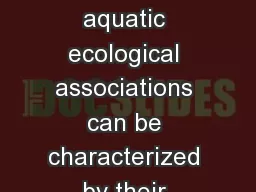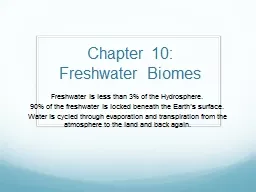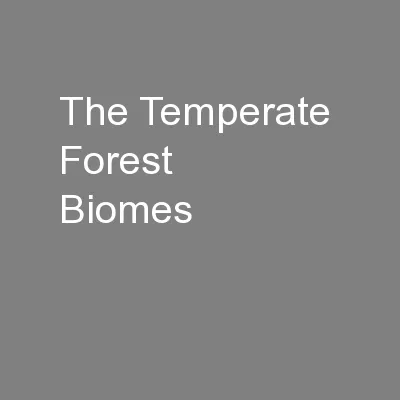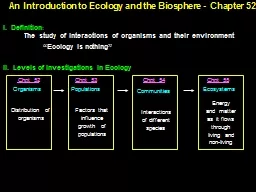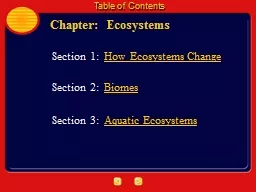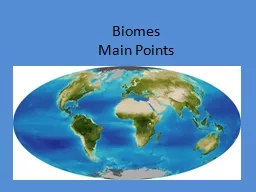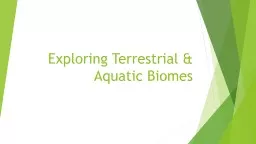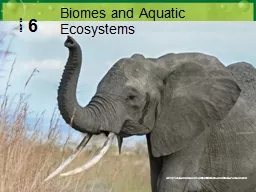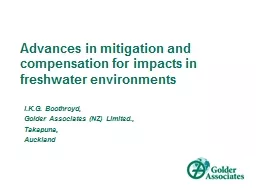PPT-Aquatic Biomes Broad aquatic ecological associations can be characterized by their physical
Author : danika-pritchard | Published Date : 2018-09-23
97 oceans 2 glaciers 1 lakes rivers streams Precipitation over land Transport over land Solar energy Net movement of water vapor by wind Evaporation from ocean Percolation
Presentation Embed Code
Download Presentation
Download Presentation The PPT/PDF document "Aquatic Biomes Broad aquatic ecological ..." is the property of its rightful owner. Permission is granted to download and print the materials on this website for personal, non-commercial use only, and to display it on your personal computer provided you do not modify the materials and that you retain all copyright notices contained in the materials. By downloading content from our website, you accept the terms of this agreement.
Aquatic Biomes Broad aquatic ecological associations can be characterized by their physical: Transcript
Download Rules Of Document
"Aquatic Biomes Broad aquatic ecological associations can be characterized by their physical"The content belongs to its owner. You may download and print it for personal use, without modification, and keep all copyright notices. By downloading, you agree to these terms.
Related Documents

